Relations with Morocco have gone through various stages since 1975. These phases have fluctuated between collaboration and confrontation – Green March or this problem on Perejil Island. In general, there are abundant common interests, but there are also parked issues that, at a given moment, can cause serious conflicts. We are referring not only to the Spanish cities in North Africa and the adjacent enclaves, but also to the existing disputes over the definition of borders in the waters that border the Canary Islands.
Perejil Island is part of the so-called squares of Spanish sovereignty in North Africa. These were territories that were outside the limits of the Spanish Protectorate of Morocco and that are a group of islands and rocks located off the coast of Morocco (see map). The best known, especially for those who had to do the obligatory military service in Ceuta or Melilla, are the Chafarinas Islands, the Alhucemas Islands and the Vélez de la Gomera rock, to these enclaves we must add the Perejil Island. 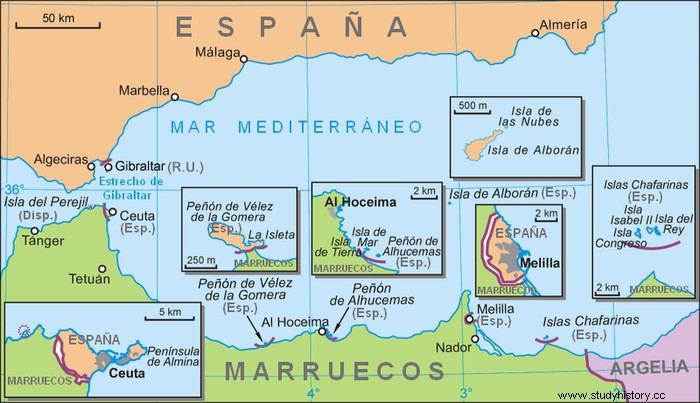
These territories, with little or no strategic value at present, have, on the contrary, a high symbolic value for both Spain and Morocco. The vindication of Moroccan sovereignty appears as soon as, for whatever reason, tensions between the two countries soar. And that is what happened when the current King Mohamed VI came to the throne (1999).
The Perejil Island incident was an armed confrontation – although not a single shot was fired – between Spain and Morocco. It happened between July 11 and 20, 2002 and the reason for the clash was the military occupation of Perejil Island, first by some gendarmes and later by Moroccan marines. It has been the most serious crisis between Spain and Morocco since the Green March of 1975.
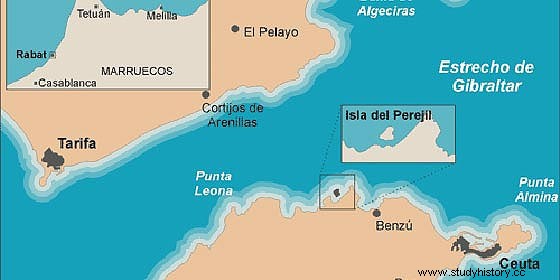
What circumstances made relations between the two countries bristle? The first divergences arose on the fishing issue; in the year 2000 negotiations began between the EU and Morocco, and their failure was the beginning of the estrangement. The lack of agreement made the Spanish government approach Algeria and Tunisia. We must not forget that Algeria is Morocco's great competitor for domination of the Maghreb.
Another issue of confrontation was that of illegal immigration. Aznar's government tightened immigration laws and accused Morocco of not making an effort to stop the flow of migrants coming from its shores. Also the alleged Spanish financing of the Polisario Front and the disagreement over the oil exploitation permits that the Spanish government had granted to Repsol near the Canary Islands, which were, according to Morocco, in its territorial waters, were added to the amount of reparations.
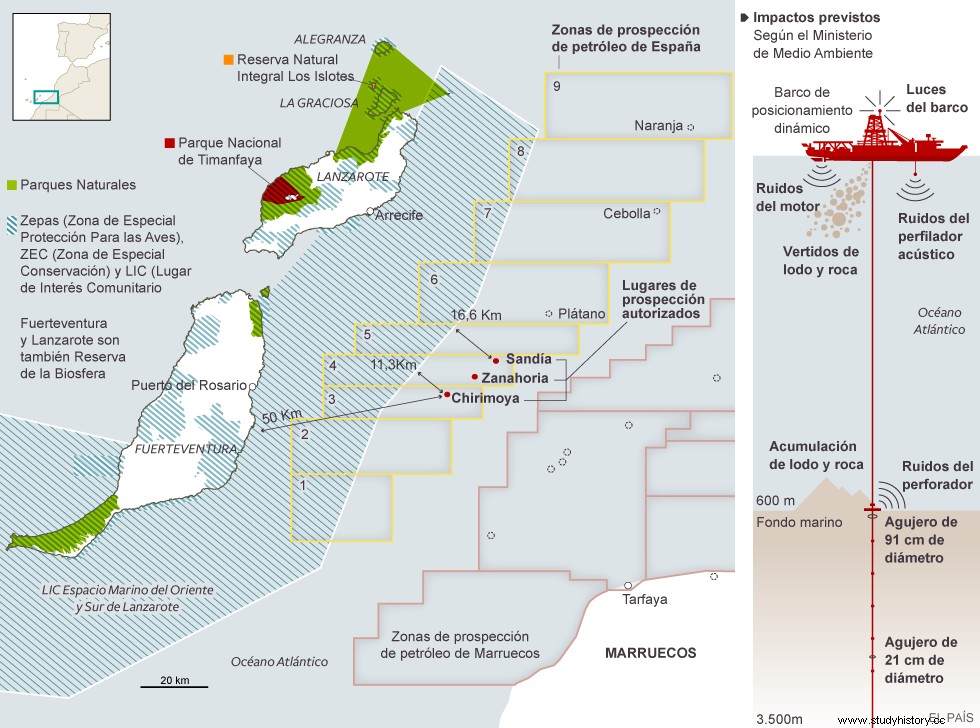
For some analysts, the distancing also had to be explained internally in Morocco. The expectations of change that Mohamed VI's accession to the throne had raised had been disappointed and the Islamists were returning to the political scene. Faced with these problems, the monarch and the Moroccan government could have chosen to seek internal cohesion by resorting to the external enemy.
The escalation of diplomatic tension culminated on October 28, 2001 with the withdrawal of the Moroccan ambassador, a very unfriendly gesture in diplomatic parlance. The conflict escalated one step further on July 11, 2002, when a group of twelve men from the Royal Moroccan Gendarmerie landed on the island of Perejil. The occupation was argued as a means to curb illicit trafficking, on a rock that Morocco claims has belonged to it since independence. The first Spanish reaction was moderate, far from any military response, although the fact was reported to the EU and NATO. Spain called for the withdrawal of the gendarmes and a return to the previous status quo. The lack of response from Morocco made the Spanish government begin to consider military action. Before, Spain had obtained the support of the EU, which issued a harsh note of condemnation, and NATO demanded a return to the previous situation.
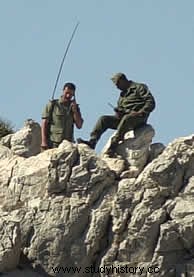
According to some sources, the decision to send gendarmes to the island had come from the king himself, without consulting his government or his closest allies – France and the United States. Morocco had gotten into a complicated situation from which it was difficult to get out, although there were some attempts to start negotiations.
On July 16, Morocco replaces the detachment of gendarmes with another of the marine infantry, which implies a militarization of the conflict. On that same date, Spain reinforces its garrisons in Ceuta and Melilla and mobilizes several units of the Navy; that same day he calls the Spanish ambassador in Rabat for consultations. Despite this, the government denied having bellicose intentions. However, Morocco was given an ultimatum that ended in the early hours of Wednesday, July 17. Shortly before, some special operations units (green berets) were transferred to Seville; These units – a total of 28 men – traveled to the island in seven helicopters and carried out a quick assault – the operation lasted 10 minutes. The Moroccan soldiers surrendered without resistance and the next day were returned to Morocco. Meanwhile, the Navy had blocked the closest Moroccan ports and two patrol boats blocked the Moroccan patrol boat that was providing support to its marines. The Air Force provided cover for all the forces with F-18 and Mirage F-1 fighters. The military operation involved an important coordination exercise between the three armies.
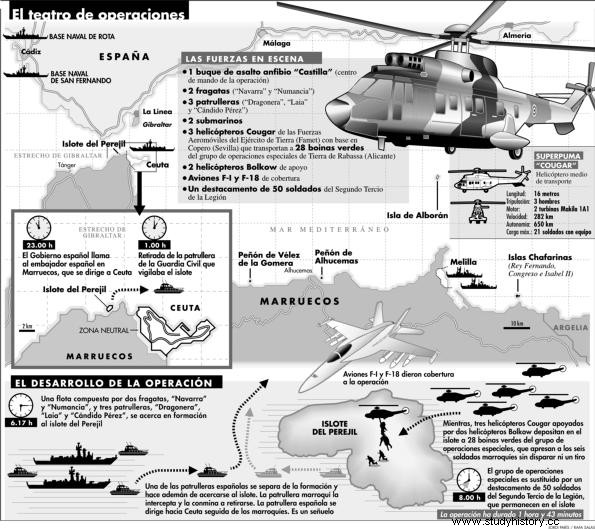
At the end of the military operation, the Aznar government contacted the Moroccan government to begin negotiations and informed the EU and NATO, as well as the UN Security Committee. The Spanish soldiers, Legion troops, remained on the island for a few days, until both countries reached, with the mediation of the United States, an agreement that consisted of keeping the island uninhabited and not having any military garrison on it.
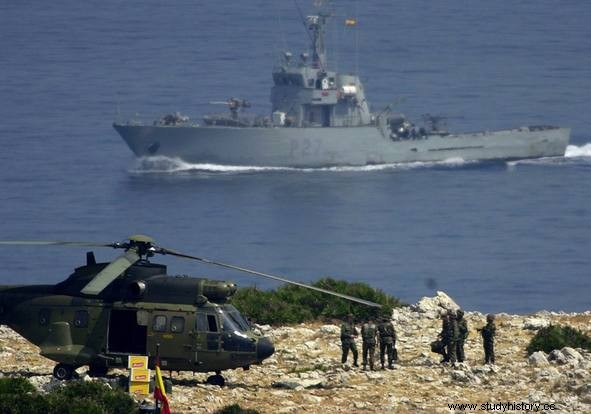
The Spanish action was interpreted by our neighbor to the south as a humiliation, and its King Mohamed VI did not try to avoid showing his lack of affection for President Aznar. The bad relations continued until the beginning of 2003, when the ambassadors returned to their posts and were definitively consolidated in March 2004 with the visit of Zapatero, already as president of the new government.
Bibliography.
Casqueiro, J. (2015). Parsley losers tell their war. Retrieved from http://politica.elpais.com/politica/2015/02/08/actualidad/1423421786_399102.html
Cembrero, I. (2006a). The secrets of making Parsley. Retrieved from http://elpais.com/diario/2006/03/19/domingo/1142743960_850215.html
Cembrero, I. (2006b). Far away neighbors:the secrets of the crisis between Spain and Morocco . Barcelona:Galaxy-Gutenberg.
EFE. (2010). Parsley opened fifteen months of hostilities. Retrieved from http://www.elmundo.es/elmundo/2010/08/18/espana/1282125284.html
https://es.wikipedia.org/wiki/Incidente_de_la_isla_de_Perejil (No date). On Wikipedia. Retrieved from https://es.wikipedia.org/wiki/Incidente_de_la_isla_de_Perejil
Molina Garcia, M.J. (2003). Spain-Morocco (1996-2002):a model of foreign policy for the Maghreb. Complutense University of Madrid, Madrid.
